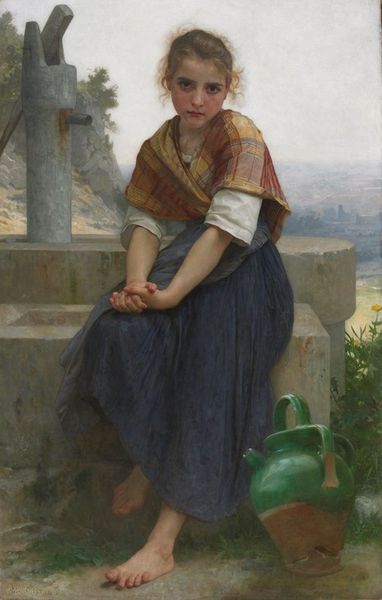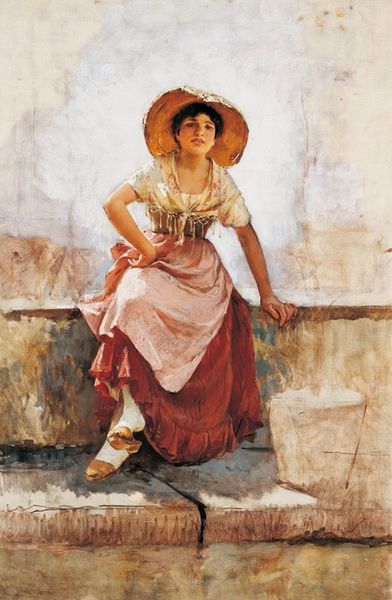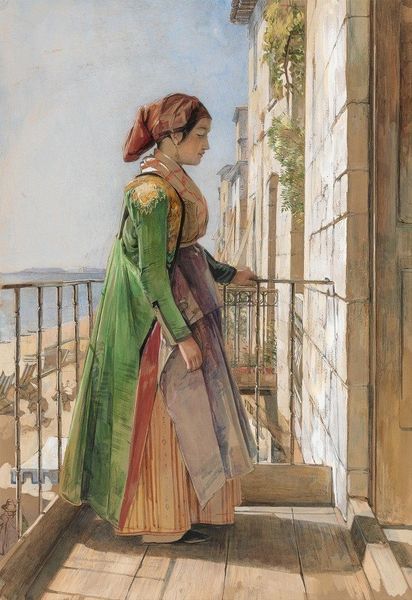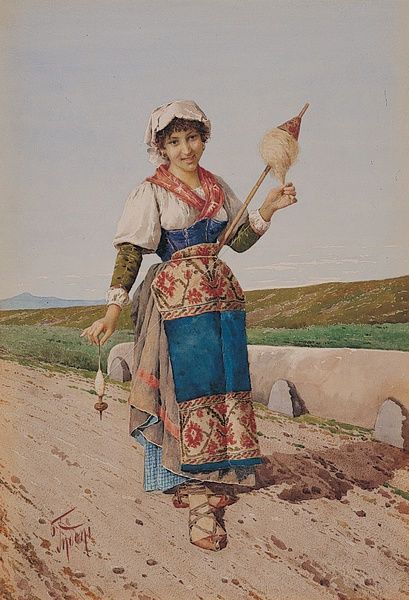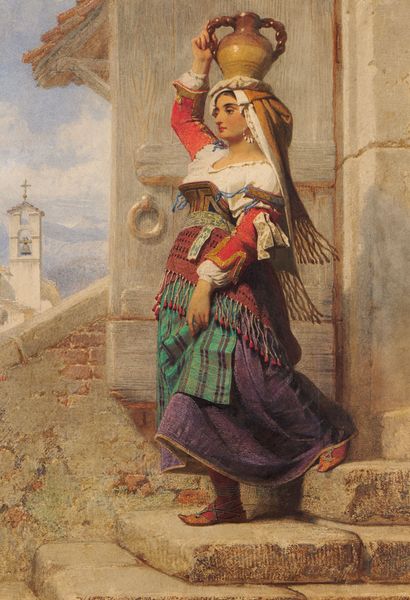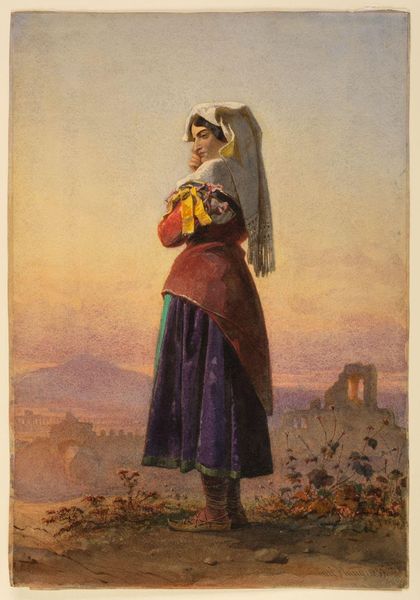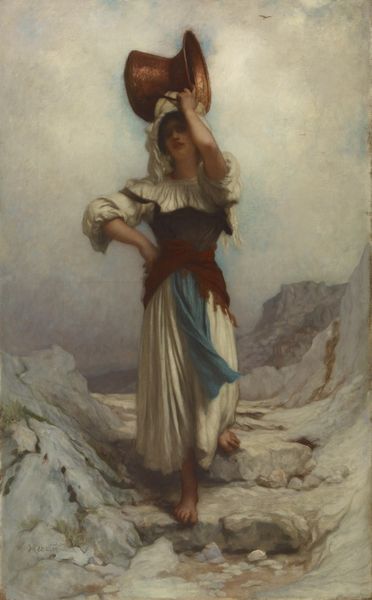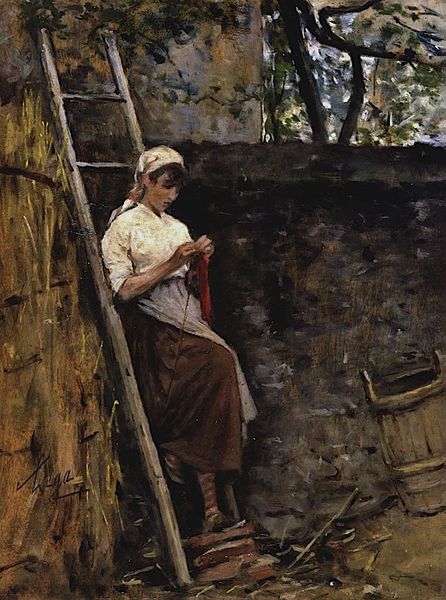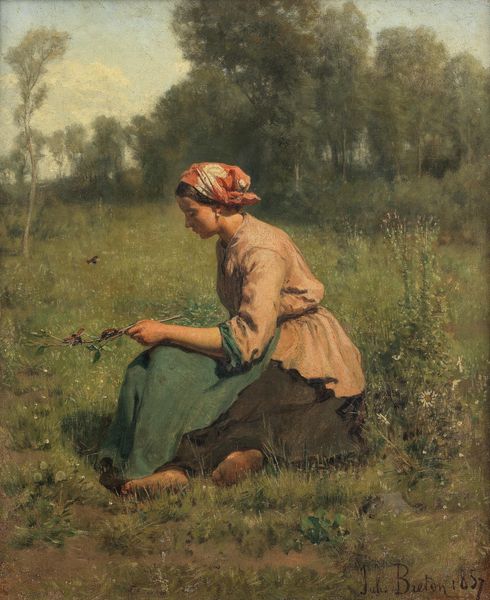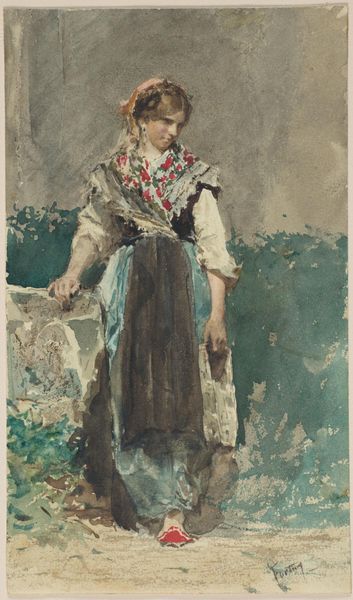
painting, watercolor
#
portrait
#
figurative
#
painting
#
impressionism
#
landscape
#
oil painting
#
watercolor
#
watercolour illustration
#
genre-painting
#
italian-renaissance
Copyright: Public Domain: Artvee
Curator: Let's spend a few moments contemplating Eugen von Blaas's watercolour painting "Popolana." Editor: The title intrigues me. I’m immediately drawn to the young woman's expression; it’s both contemplative and a little guarded. She feels caught between worlds. Curator: Von Blaas often depicted scenes of Italian peasant life, and "Popolana" certainly aligns with that interest. It is about constructing a scene and perhaps romanticizing the labor that surrounds the subject. We need to understand the cultural lens through which he painted these women. Editor: I agree, and that romanticism is certainly evident in the details – the delicate roses in her hands, the blossoming vines overhead. It creates a beautiful, almost idyllic picture that definitely glosses over the harder aspects of working-class life. Curator: Right. How do we reckon with this image within the politics of representation and its engagement with notions of labor, beauty, and the other? Were these depictions exploitative or simply a reflection of his time, feeding the expectations of art buyers at the time? What is lost when the sitter is removed from the discourse? Editor: It is such a nuanced discussion, as, by painting her, von Blaas immortalized her existence, albeit through his interpretation. Considering gender, it might be valuable to think about this artwork as another brick in the construction of gender and female identity. The piece feels very ‘contained’ as a way to look at control. Curator: That is helpful. Perhaps by understanding that control and the art market pressures that create the need to "package" and "sell" the lives of laborers, we can unpack the image further, acknowledging that her likeness has agency even when mediated by Blaas. Editor: Von Blaas offers a glimpse into a world, shaped, perhaps, by societal norms, but we can utilize critical strategies to recognize what exists behind the beauty of the image itself. Curator: Precisely. It's through those contextual considerations that we can extract greater meaning, allowing "Popolana" to participate in a more meaningful dialogue with our contemporary understandings of identity.
Comments
No comments
Be the first to comment and join the conversation on the ultimate creative platform.

